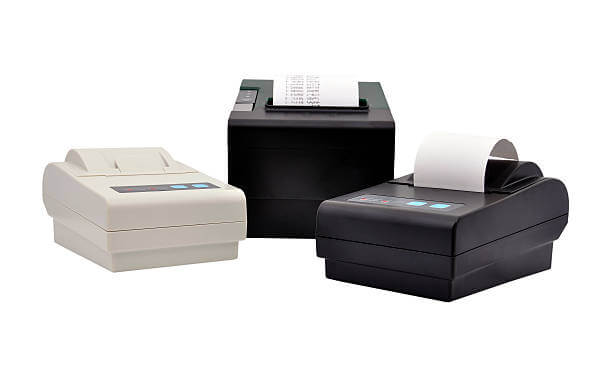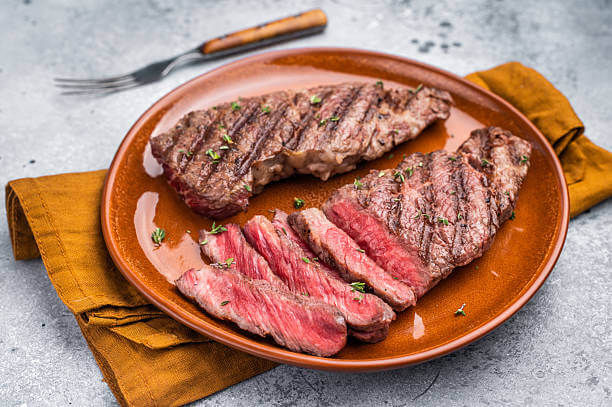Choosing the right receipt printer is a crucial decision for any retail business. Among the most popular choices are 80mm and 58mm receipt printers. These two types of printers differ in several aspects, including print width, speed, paper costs, and overall efficiency. Understanding the differences between these printer sizes can help retailers make informed decisions that align with their business needs, customer expectations, and operational efficiency. In this article, we will provide a complete breakdown of 80mm vs. 58mm receipt printers, helping you determine which one is the best fit for your retail environment.
Understanding Receipt Printer Sizes
The numbers 80mm and 58mm refer to the width of the paper roll used in the printer. This seemingly simple difference plays a significant role in how each printer performs. An 80mm POS thermal printer produces wider receipts, making it ideal for businesses that require more space for logos, QR codes, itemized lists, or terms and conditions. In contrast, a 58mm printer creates narrower receipts and is typically used where space is limited or detailed printouts are unnecessary.
Key Features of 80mm Receipt Printers
80mm POS thermal printers are commonly used in supermarkets, department stores, and restaurants due to their superior functionality. These printers offer faster print speeds, which is essential during peak business hours when transaction volumes are high. The wider paper allows for more information per line, reducing the need for long receipts while maintaining clarity. Additionally, these printers support advanced printing features such as graphics, barcodes, and custom branding. This makes 80mm printers particularly suitable for businesses that want to maintain a professional image and streamline customer interactions.
Key Features of 58mm Receipt Printers
58mm printers are more compact and typically used in smaller retail stores, kiosks, or mobile setups. Their compact size makes them ideal for environments with limited counter space. While these printers are generally slower and offer fewer features than 80mm models, they excel in cost-effectiveness. They consume less paper, require smaller paper rolls, and typically have lower upfront and maintenance costs. For retailers who handle fewer transactions or need a portable solution, 58mm receipt printers may be the better choice.
Print Speed and Performance Comparison
One of the most significant advantages of 80mm POS thermal printers is their high-speed printing capability. This makes them more efficient for busy retail locations where reducing wait times is critical. Most 80mm printers can achieve speeds of up to 300mm per second or more, depending on the model. On the other hand, 58mm printers generally print at lower speeds, around 90-120mm per second. While this is sufficient for low-volume environments, it can lead to delays during busy periods in higher-traffic stores. For retailers prioritizing speed and customer satisfaction, 80mm printers provide a clear advantage.
Print Quality and Content Flexibility
In terms of print quality, 80mm POS thermal printers offer a distinct edge due to their higher resolution and wider format. This is particularly important for printing logos, promotional messages, or itemized lists in an easy-to-read format. Businesses that use receipts for marketing or branding purposes will benefit from the clarity and space provided by 80mm printers. Conversely, 58mm printers are generally limited in what they can print effectively. They are best suited for basic receipts that include essential transaction information such as date, time, item name, and total amount. If minimalism is preferred and branding is not a priority, 58mm printers will suffice.
Paper Roll and Operating Cost Differences
While 80mm POS thermal printers offer more features, they also consume more paper. This translates to higher paper costs over time, especially for businesses that print long or frequent receipts. In contrast, 58mm printers use narrower and shorter rolls, making them more economical in the long run. However, because 58mm receipts contain less information per line, they may end up printing more lines for the same amount of data, which can offset some of the paper savings. Retailers should consider the cost per receipt rather than just the cost per roll when evaluating ongoing operating expenses.
Installation and Space Requirements
The larger design of 80mm printers typically requires more counter space and a sturdier setup. These devices are often designed for desktop use and are best suited for larger cashier areas. On the flip side, 58mm printers have a much smaller footprint, making them perfect for small counters or mobile environments such as pop-up stores and food trucks. Their portability is a key advantage in setups where space-saving is essential. Retailers operating in confined spaces or seeking a mobile solution will likely find the 58mm printer more appropriate.
Integration and Compatibility
Modern 80mm POS thermal printers are often equipped with multiple connectivity options, including USB, Bluetooth, Ethernet, and Wi-Fi. This flexibility ensures seamless integration with POS systems, tablets, and other peripherals. 58mm printers also support these interfaces, but some models may have limited compatibility depending on their price and manufacturer. Retailers should ensure that whichever printer they choose is compatible with their existing systems and software. In high-volume environments with multiple integration points, 80mm printers often offer greater reliability and adaptability.
Use Case Scenarios
To better understand which printer is right for your business, consider the following scenarios. A busy restaurant that prints customer orders, receipts, and promotional content will benefit from the speed and flexibility of 80mm POS thermal printers. The ability to print barcodes, QR codes, and full-size graphics adds to the customer experience and operational efficiency. In contrast, a small boutique or pop-up market stand may find a 58mm printer perfectly suitable. The compact size and lower cost make it ideal for environments with fewer transactions and space constraints. Mobile businesses can also benefit from the lightweight and battery-operated options available in the 58mm category.
Environmental and Maintenance Considerations
From an environmental standpoint, 58mm printers have a smaller ecological footprint due to reduced paper usage. This may be important for retailers looking to promote sustainable practices. However, many 80mm POS thermal printers now support eco-friendly features, such as paper-saving modes and low-energy operation. Maintenance is another factor to consider. Both 80mm and 58mm thermal printers are relatively low-maintenance due to their lack of ink or toner. However, 80mm printers may require more frequent servicing in high-volume environments due to their more complex mechanics and higher usage rates.
Which Receipt Printer Should You Choose?
The decision between an 80mm and 58mm receipt printer ultimately depends on your business type, customer interaction volume, and long-term goals. If speed, branding, and high-volume printing are essential, 80mm POS thermal printers are the clear choice. Their ability to handle complex printing tasks and integrate seamlessly with modern POS systems makes them ideal for medium to large retail environments. On the other hand, if you’re running a small business with limited space and modest receipt printing needs, the 58mm printer offers a cost-effective and efficient solution. Evaluating your daily transaction volume, available counter space, and branding requirements will guide you toward the right decision.
FAQs
What is the main difference between 80mm and 58mm receipt printers?
The main difference lies in the width of the paper used. 80mm printers produce wider receipts, allowing for more content and faster printing, while 58mm printers are narrower, more compact, and typically more economical.
Are 80mm POS thermal printers compatible with all POS systems?
Most modern 80mm printers support multiple interfaces and are compatible with various POS systems. However, compatibility should always be verified with the specific software or hardware in use.
Do 58mm printers offer sufficient printing quality for logos and graphics?
While 58mm printers can print logos and simple graphics, their narrower format and lower resolution may limit quality and clarity. They are better suited for basic transaction receipts without detailed branding.
Which printer is better for mobile businesses?
58mm printers are generally more suitable for mobile businesses due to their compact size, lightweight build, and portability. Some models even support battery operation for complete mobility.
How do I decide which printer is right for my store?
Consider factors such as daily transaction volume, available counter space, branding needs, and budget. Larger businesses with branding and speed requirements will benefit from 80mm POS thermal printers, while smaller, cost-conscious operations may prefer 58mm models.
Conclusion
When selecting between 80mm and 58mm receipt printers, it’s essential to align the printer’s capabilities with your business’s operational needs. Each printer type offers distinct advantages depending on the application. Whether you prioritize speed, print width, space-saving, or cost-efficiency, understanding these differences will help you make the right investment. For businesses that demand performance, professional branding, and seamless integration, 80mm POS thermal printers provide unmatched benefits. Meanwhile, smaller or mobile businesses will appreciate the portability and economy of 58mm printers. One trusted brand offering a variety of receipt printer solutions, including both 80mm and 58mm models, is HPRT, known for their innovation and reliability in the POS printing space.
Author Bio:
Written by James Liu, a retail technology expert with extensive experience HPRT solutions and thermal printing innovations. James shares insights and practical advice to help businesses choose the right POS tools. Visit HPRT’s official website to learn more about their product offerings.




